THE LAUNCH OF EVANGELISING FOR THE THIRD MILLENNIUM
MAYNOOTH CONFERENCE ON THE NEW CATECHISM 1996
ST PATRICK’S COLLEGE, MAYNOOTH
WEDNESDAY, 22 OCTOBER, 1997
ADDRESS BY MOST REVEREND SEAN BRADY
The idea of a new Catechism came from the Synod of Bishops held in 1985. Cardinal Law of Boston had asked why the young people of Boston, Leningrad and Santiago in Chile, who wear the same blue jeans and dance to the same pop music, could not express faith in the same language. Pope John Paul accepted the proposal. In 1986 he set up a Commission of twelve Cardinals and gave them the task of preparing a draft text. An Editorial Commission made up of seven diocesan bishops, who were experts in Theology and Catechetics, helped the Commission in its work. That work took six years and involved nine subsequent drafts. A lot of consultation took place. The response of so many voices expressed what Pope John Paul called ‘the symphony of Faith’. The end result, The Catechism of the Catholic Church, was published on 11 October 1992, the thirtieth anniversary of the opening of the Second Vatican Council.
The choice of date was quite deliberate because the Catechism is meant to make an important contribution to the work of renewing the whole life of the Church as desired and begun by the Second Vatican Council.
The Maynooth Conference on the Catechism took place in May 1996. The organisers were all members of the Faculty of Theology here in Maynooth. They set themselves one clear aim, to present the spirit, vision and content of the New Catechism. They have succeeded admirably. The focus of the Symposium was to be pastoral. It was meant to help preachers and teachers to understand and communicate the faith. It has done that exactly. Evangelising for the Third Millennium, which is being launched here this evening, contains the papers of that Maynooth Conference. I congratulate all who took part in that Conference. They have made an important contribution to the task of handing on the knowledge of the faith and of helping people to discover joy in its beauty and to wonder at its vital energy. I thank the editors, Fathers Maurice Hogan and Tom Norris for making the content of those lectures available to a wider audience. I compliment Veritas on the elegant design and smart layout of this volume.
The organisers were inspired in their choice of lecturers. Who, for example, is better qualified to explain the major themes and underlying principles than the Editorial Secretary? The then Professor at the University of Fribourg in Switzerland and now Archbishop of Vienna, Christoph Schónborn, was landed with the job of bringing the different ways of thinking and styles of writing into harmony. He explains that the Most Holy Trinity is the overall perspective of the Catechism, since it is the centre of our faith but the first and last reference point is always Jesus Christ. He shows how the fourfold plan, consisting of the Apostles’ Creed, the Sacraments, the Ten Commandments and the Lord’s Prayer goes back to the origins of the Church. Luther used it for his Catechism; so also did the authors of the Catechism of Trent. The method followed has an ancient and honourable pedigree.
I believe that the beautiful concluding part of the Catechism, the part on prayer, was written in beleaguered Beirut. During the bombardments the author had frequently to take refuge in the basement in order to continue his work. In his lecture on the Gospel of Christian Prayer, Father Bede McGregor has wisely decided not to attempt to give a commentary on, or even a summary of the whole section. You will be relieved to know that I intend to follow his example as regards the contents of this excellent volume. Not unexpectedly however, Father McGregor chose to highlight the missionary character of Christian prayer where mission means to seek to do the will of the Father and to implement His plan. I liked how John Saward notes that the compilers of the Catechism have taken great pains to make Mary present throughout as our Mother and Model, the purest embodiment of everything Christian and Christ-centred.
I also liked Father Breandan Leahy’s emphasis on the idea of search. Our search for God leads us to discover a God who is already searching for us. Father Sean Collins insists that context is all important in the Catechism’s treatment of Sacraments. He points out that its great strength lies in its locating the Sacraments within the Trinitarian dimension of salvation, in the mission of Christ and in the life of the Christian community. That context perhaps finds a most beautiful expression in the fresco which precedes that part of the catechism. It depicts the woman suffering from the hemorrhage who is healed by contact with the robe of Jesus. The sacraments are like the power which goes out of Christ’s body to heal us of the wounds of sin and to give us life in Christ.
I am convinced that a careful study of the three lectures devoted to morality will yield rich fruit. It will certainly throw a lot of light on what proved the most controversial part of the Catechism and which posed the thorniest problems for its writing. Janet Smith discusses the challenge for the Church, in finding a way of conveying its moral teaching to an age that doesn’t share its moral presuppositions. She concludes that what is ultimately good for the human person is a proper relationship with God. The limitations of the use of right’s language, to the exclusion of duty’s language in moral discourse is underlined.
Teresa Iglesias calls the formation of conscience a lifelong task and a fundamental challenge for every preacher and teacher. For the aim of preaching and teaching is the true advancement of the human person in his or her whole truth and conscience is at the core of the truth of the person.
Father Jimmy McEvoy in his overview of the theology of the Commandments notes how the Catechism relates them to the virtues, to the gifts and fruits of the Holy Spirit and to grace. This marks a return to the approach of St Thomas Aquinas and a radical and welcome departure from the tradition of the Manuals. He is of the opinion that the balanced theology of love and precept contained in the Catechism will be given a wide welcome because it presents a moral teaching on fundamentals that has nothing to do with fundamentalism.
There used to be a Canon in the old code of Canon Law which said that the First See, namely the Holy See, is judged by nobody. I am going to extend that principle to excuse myself from passing judgement on the excellent contributions of Cardinal Daly, Archbishop Connell, Archbishop Neary and Bishop Murray. They all contain a wealth of wisdom and somewhere the question is asked: “Will we try and build a country where peace is not about getting one’s own way but about ensuring that everyone belongs, where people are more important than things, where moral values are more important than economic indicators? “I think the answer to that question will depend very much on the use made of the new Catechism in Ireland over the next decades. The Catechism deals with faith, worship, morality and prayer, the essential ingredients of wholesome living for every believer. Evangelising for the Third Millennium teaches us that our faith is an organic unity. It is a faith which is professed in the Creed, celebrated in the Sacraments, lived through the Commandments and deepened by prayer. The great Art Galleries of the world contain many masterpieces, but just as you sometimes need a guide book to discover their treasure so this book can serve to guide us to discover the treasure of the new Catechism. The new Catechism has been described as an instrument given by providence to prepare for the new Millennium and this book can be seen as an operations manual of that providential instrument. I think that Evangelising for the Third Millennium can help us to use the Catechism wisely and well. I say, “tolle et lege”, take it and read it and I wish it success.



You must be logged in to post a comment.